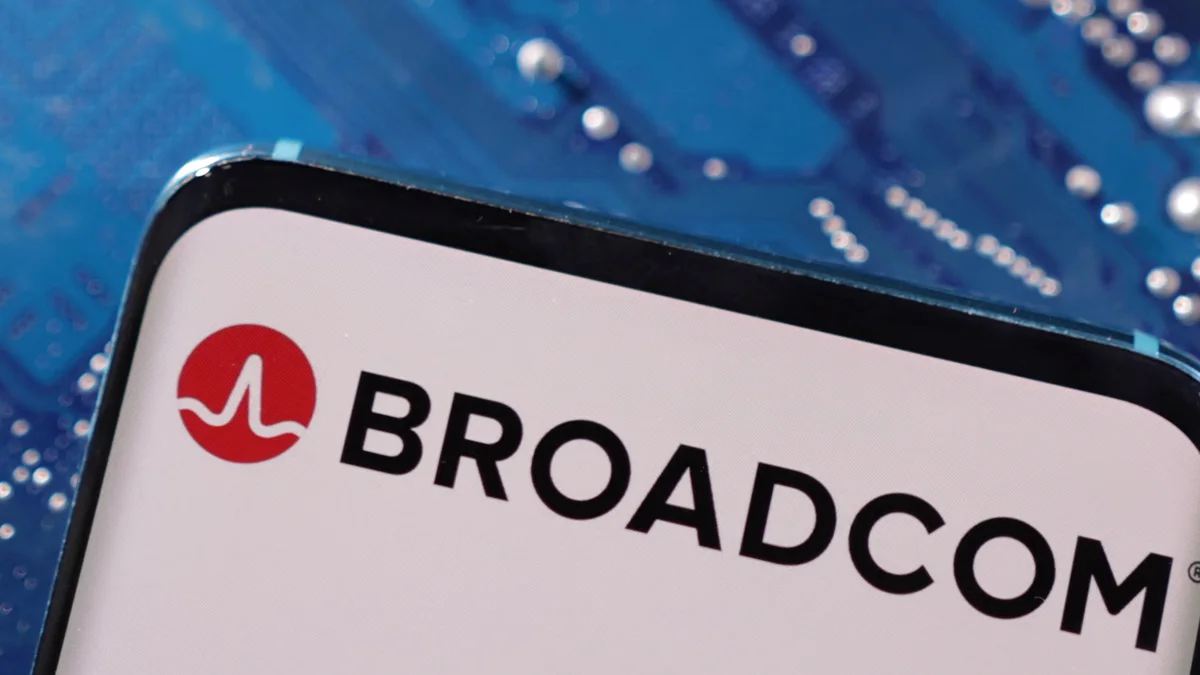Necessary Always Active
Necessary cookies are required to enable the basic features of this site, such as providing secure log-in or adjusting your consent preferences. These cookies do not store any personally identifiable data.
|
||||||
|
||||||
|
||||||
|

Broadcom stocks dropped 3% on June 6 after the company’s quarter three revenue forecast failed to inspire investors. According to Reuters, investors were extremely optimistic of the chip maker’s stocks amidst the AI boom. According to Bernstein analyst Stacy Rasgon, Broadcom’s lower revenue projections were driven by high expectations.
Broadcom reported revenue of $15 billion in quarter two, surpassing analyst projections of $14.99 billion. The semiconductor maker also reported $1.58 earnings per share in the quarter. These earnings were slightly higher than analyst projections of $1.56 per share.
“Q2 AI revenue grew 46% year-over-year to over $4.4 billion, driven by robust demand for AI networking. We expect growth in AI semiconductor revenue to accelerate to $5.1 billion in Q3, delivering ten consecutive quarters of growth, as our hyperscale partners continue to invest,” Broadcom President and CEO Hock Tan said.
Broadcom’s market valuation crossed the $1 trillion market for the first time in December. This happened after the company forecasted massive increase in chip demand to power AI. This year alone, Broadcom stocks have gained 12%. Last week, its competitor Marvel Technology projected revenues above analyst estimates for the second quarter.
Marvell’s revenue projections are pegged on high demand for its chips to power AI workloads in data centers. The company has an annual forward price-to-earnings ratio. Broadcom’s forward price-to-earnings ratio stands at 35.36, higher than Marvell’s which is 20.63.
Despite surpassing analyst estimates in quarter two, the chip manufacturer maintained conservative projections for the coming quarter. Broadcom projected revenues of about $15.8 billion in the third quarter. This is slightly higher than analysts’ average of $15.71 billion.
Broadcom supplies chips to big companies, including Apple and Samsung. It also offers advanced networking equipment that facilitates transfer of huge volumes of data across AI data centers. This makes its chips a vital component in the development of generative AI technology.
Broadcom also supports the design of custom AI processors for big cloud providers. Its processors compete with the highly-priced Nvidia chips. In recent months, Nvidia has been exposed to Washington’s export curbs and President Donald Trump’s dynamic trade policies as the US attempts to limit China’s access to the most advanced American AI technology.
“AVGO is ramping up two additional customers, but they are still small. So the processor business will grow this year, but at a measured rate,” Morgan Stanley said.
Broadcom will continue shifting customers to its subscription plans to increase recurring revenue in the coming quarter. The company upsells its customers to a more comprehensive package. Currently, 87% of its 10,000 major VMware customers have already shifted to the subscription model. This is significantly more than it had last quarter. According to Tan, two-thirds of Broadcom’s overall customer base has shifted to the subscription model.
Broadcom also highlighted revenue from its AI networking business, which accounted for 40% of the company’s total AI revenue. The company had anticipated that this revenue would drop to 30% in the quarter under review, but it didn’t. The company maintained this view, projecting that revenue from its AI networking unit will comprise 30% of AI revenue in the next quarter.
Tan reported that Broadcom was experiencing a positive surprise in AI networking. He attributed revenues from the business to scale-up data center server architecture, which is increasingly embracing Ethernet. Scale-up architecture involves server racks that pack compute chips densely.
Scale-up architecture uses 5 to 10 times higher switch density compared to scale-out architecture. Scale-out architecture boosts computing capacity by increasing the number of server racks in data centers. Scale-up architecture increases demand for Broadcom’s new high-capacity Tomahawk 6 switch chips that provide cutting-edge bandwidth and port density.